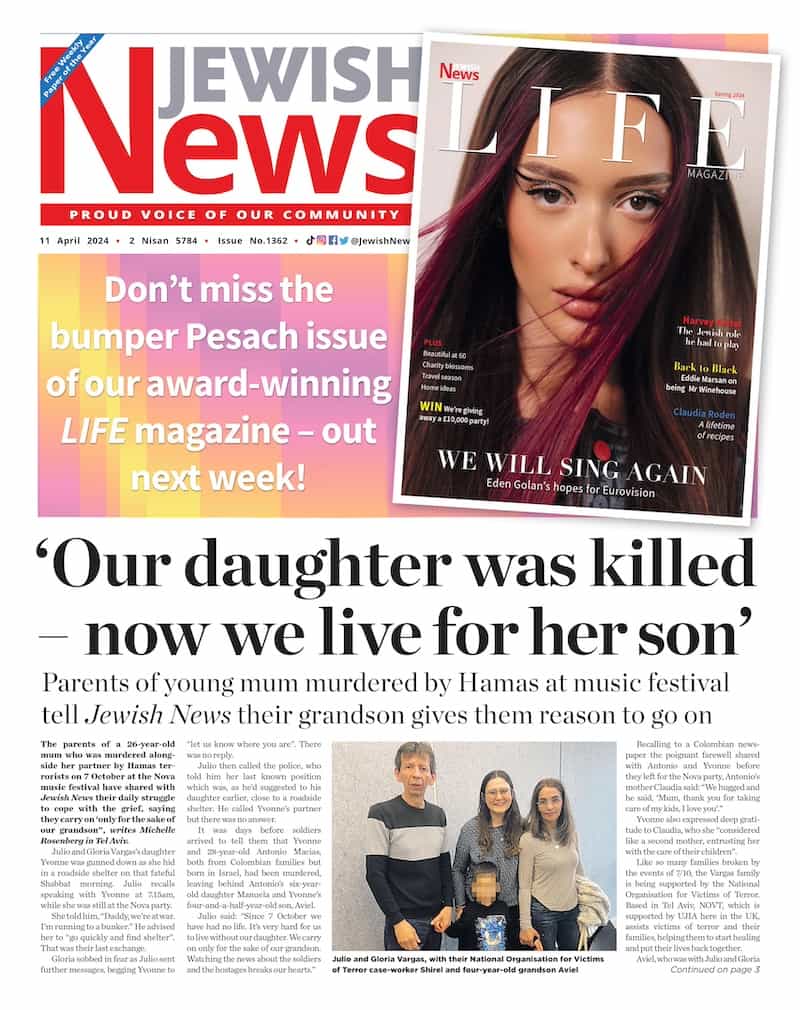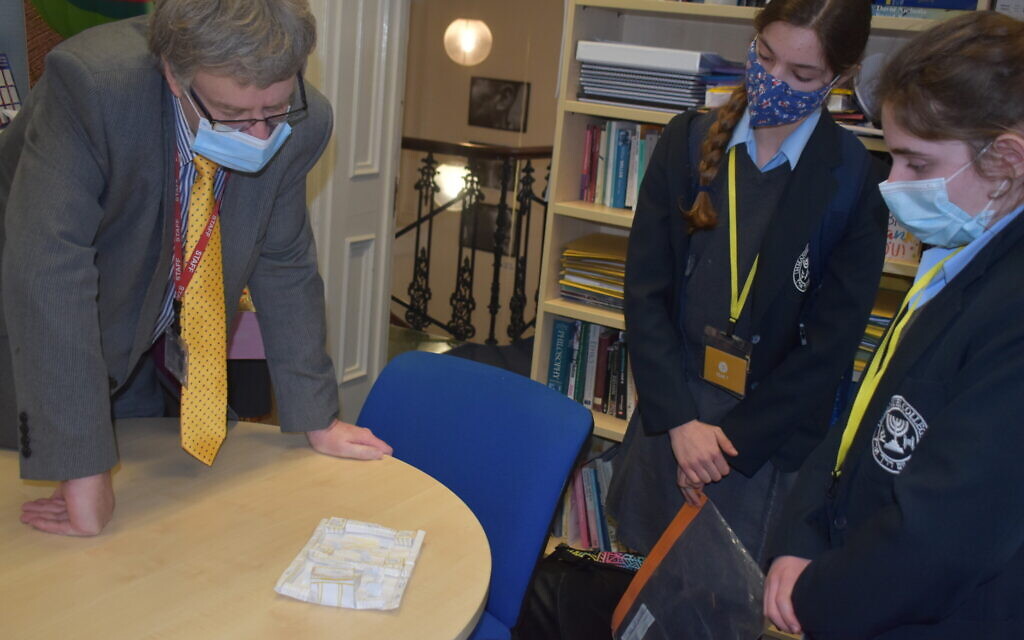SPECIAL REPORT: How the pandemic has transformed education in Jewish schools
Remote learning, well-being workshops, classroom bubbles and virtual parents’ evenings are just some of the ways Covid impacted on schools – and the changes are likely here to stay
Speaking from the side of a swimming pool, Ben Freedman from Immanuel College explains how he has only been the independent school’s director of digital learning since January.
There was no director of digital learning before him. It is a new role, one that reflects the post-Covid world into which Jewish schools are emerging.
“We saw a prominent role for digital learning going forward,” says Freedman, one of several educators speaking to Jewish News this week about the pandemic changes here to stay.
Get The Jewish News Daily Edition by email and never miss our top stories Free Sign Up
“It became an absolute necessity that all staff knew how to use digital tools to do the stuff they were doing really well anyway.”
Extended lockdowns meant a crash course in remote learning, educational technology (ed-tech) tools, digital classrooms, interactive workbooks and all manner of e-wizardry besides.
It also put a new focus on mental health monitoring, changed relationships, and in some cases, completely overhauled the structure of learning.
Rabbi Yehuda Pearlman, principal at Broughton Jewish Cassel Fox Primary School in Manchester, said: “There were lots of positives, chief among them the bubble model, which we’re keeping.
“Every year group now has their own area of corridor, their own timetable, own lunchtime, own playground, but also their own dedicated group of teachers.
“We split the year group between the teachers – four teachers per year group, two teaching secular, two kodesh. They revolve, teaching back-to-back but to smaller groups, so never more than 15 to 20 kids in any lesson.
“In the past, it was a bit disjointed and misaligned between secular and kodesh. Now, teachers are less spread out. They work harder but sharper. It’s a smoother operation. The kids are more settled. They love to learn in small groups, we just didn’t know we could pull it off until forced to reconfigure.”
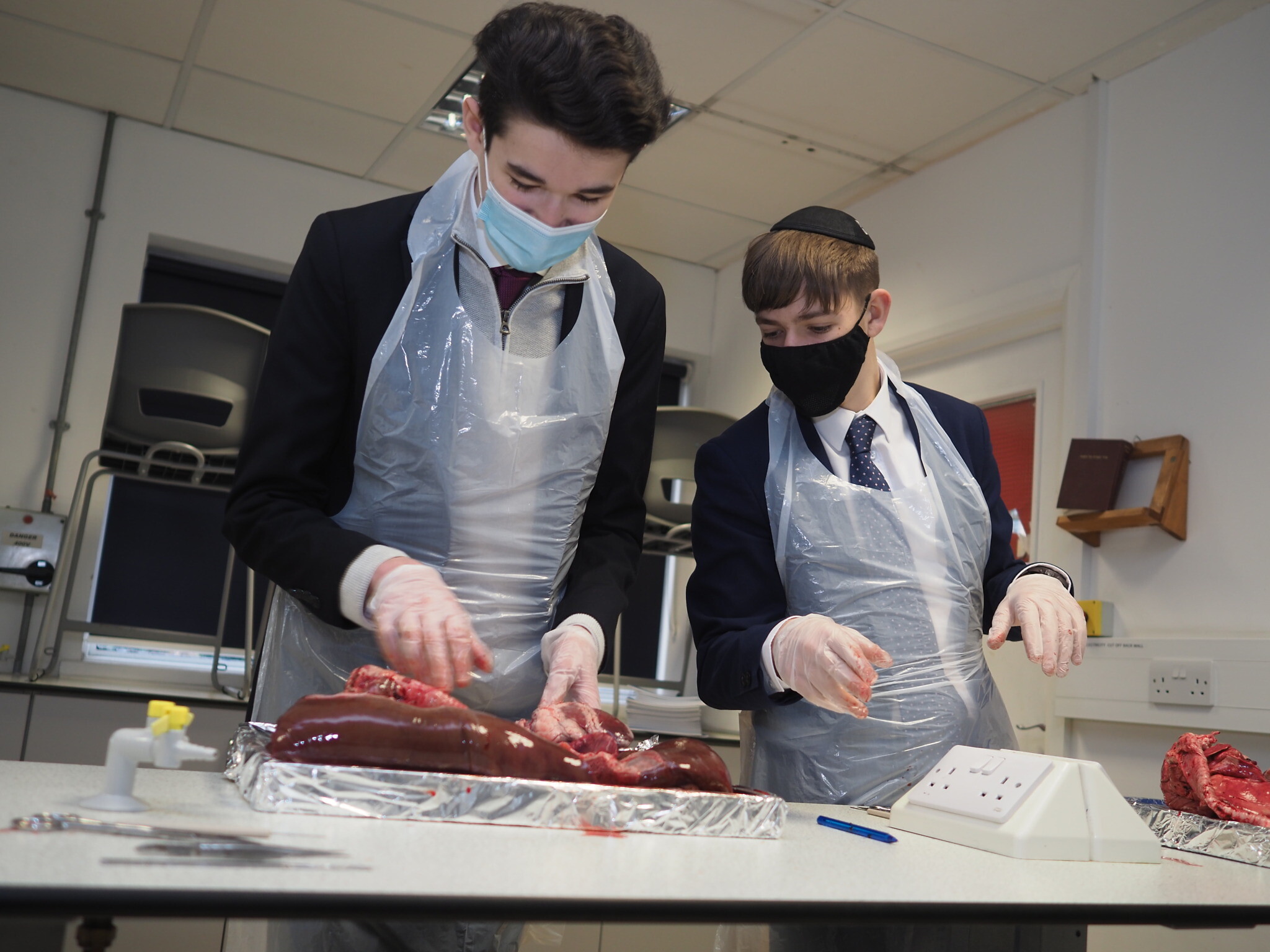
Debbie Lebrett, headteacher at Hasmonean Boys’ School, echoes the theme. “We’ve all surprised ourselves with our resilience and ability to change in difficult situations,” she says. “People think schools don’t move with the times, but we all had to change tremendously quickly.
“For instance, we had to build online classrooms, train all staff in something completely new, run virtual and live schools simultaneously, set up testing labs, help students with stress, anxiety, loss, and bereavement… You name it, we’ve dealt with it this past year.”
Pearlman says Covid “really embedded” mental well-being in schools. “We’d piloted it, but it became the norm during Covid, teachers addressing the emotional needs and language of children. We now have a well-being slot in the timetable. Covid made it bread and butter. It’s now second nature.”
Lizzie Caplan, primary Jewish Studies advisor at Partnerships for Jewish Schools (PaJeS), which coordinated the networks that supported teachers and schools throughout the pandemic, says the non-physical effect of lockdowns changed a lot.
“During Covid, all the boundaries just blurred and vanished,” she says. “Boundaries between work and home, between school and home, it all changed overnight. You had parents sat next to their child on school Zoom calls, essentially in the classroom.”
She says parents taking a far more active role in their child’s learning was “a really big positive” and one that posed a question.
“Now it’s all shifted back to the classroom, do we try to keep parents as involved? Do we involve them at a more in-depth level? Or do we go back to the original model of just updating them every so often?”
Lebrett can’t see a significant change in teacher-pupil relationships, but does think the forced embrace of technology will have knock-on effects beyond the classroom.
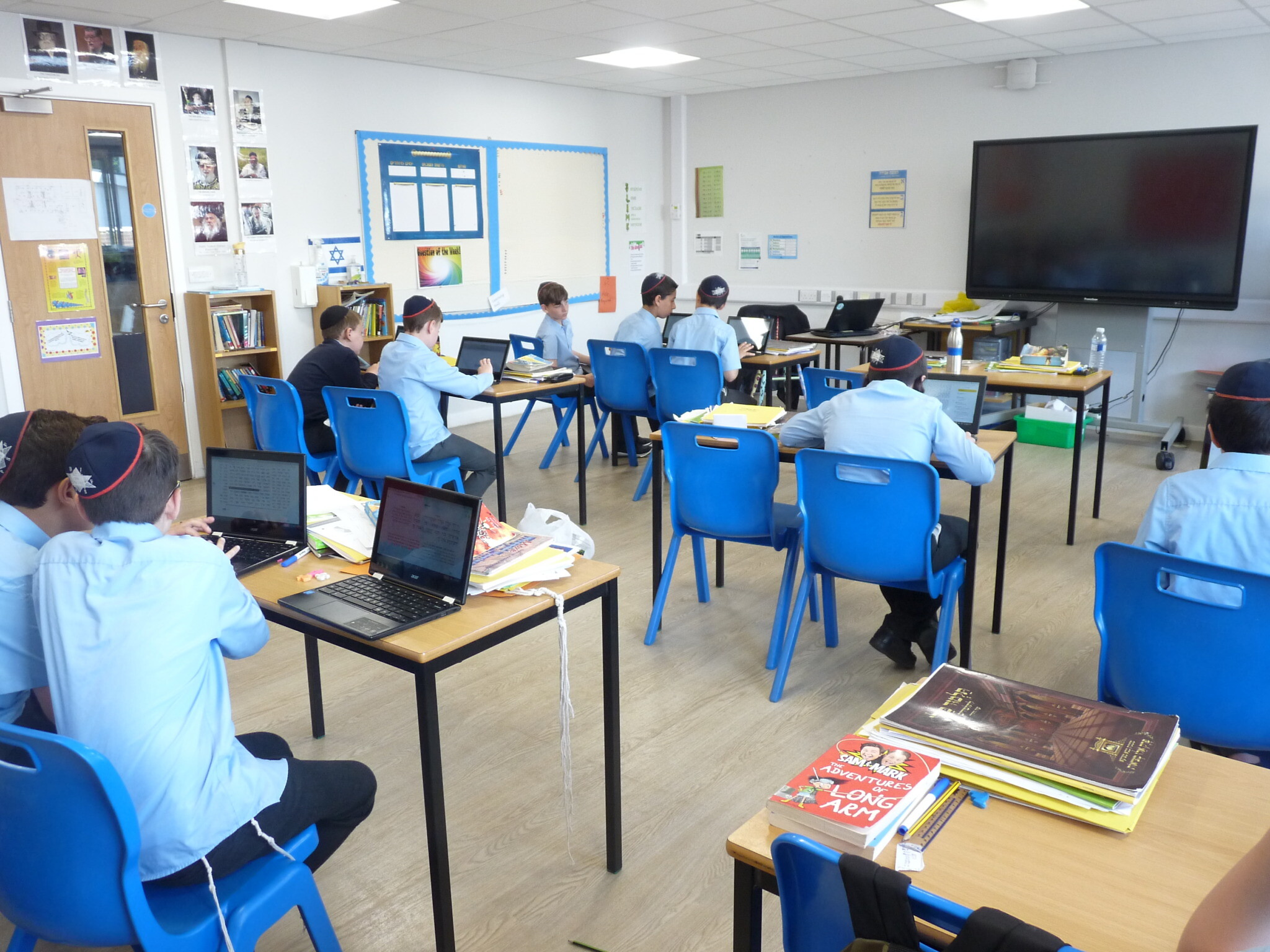
“We moved to a virtual parents’ evening and I can’t see us ever going back. It’s fantastic. You get your time slot, you’re on a stopwatch, and when your time’s up you move on to the next. In half an hour, you see all your teachers. Before, you waited three hours in a cold hall for all the parents in front of you.”
Caplan says “one of the big things” to come out of this time is realising that, “in terms of getting a Jewish education, the home is where it happens”, a sentiment repeated elsewhere. A tech convert herself, she recognises its limitations, particularly for Jewish children.
“Making [Jewish Studies] something that’s relevant – that’s been hard to deliver remotely. It’s made us look again at the curriculum,”
she says.
“More than other subjects, it comes down to the energy of the teacher in the classroom, the experiences they can have together. It’s something that’s meant to be lived. That barrier of Zoom, the loss of the in-person dynamic, makes it not quite as real, not quite as immediate.
“At the same time, with shuls and community buildings closed, there was a lack of back-up when it came to a Jewish presence in children’s lives. Schools were left to create a Shabbaton, a Kabbalat Shabbat online, that kind of thing, to build a Jewish community around children.”
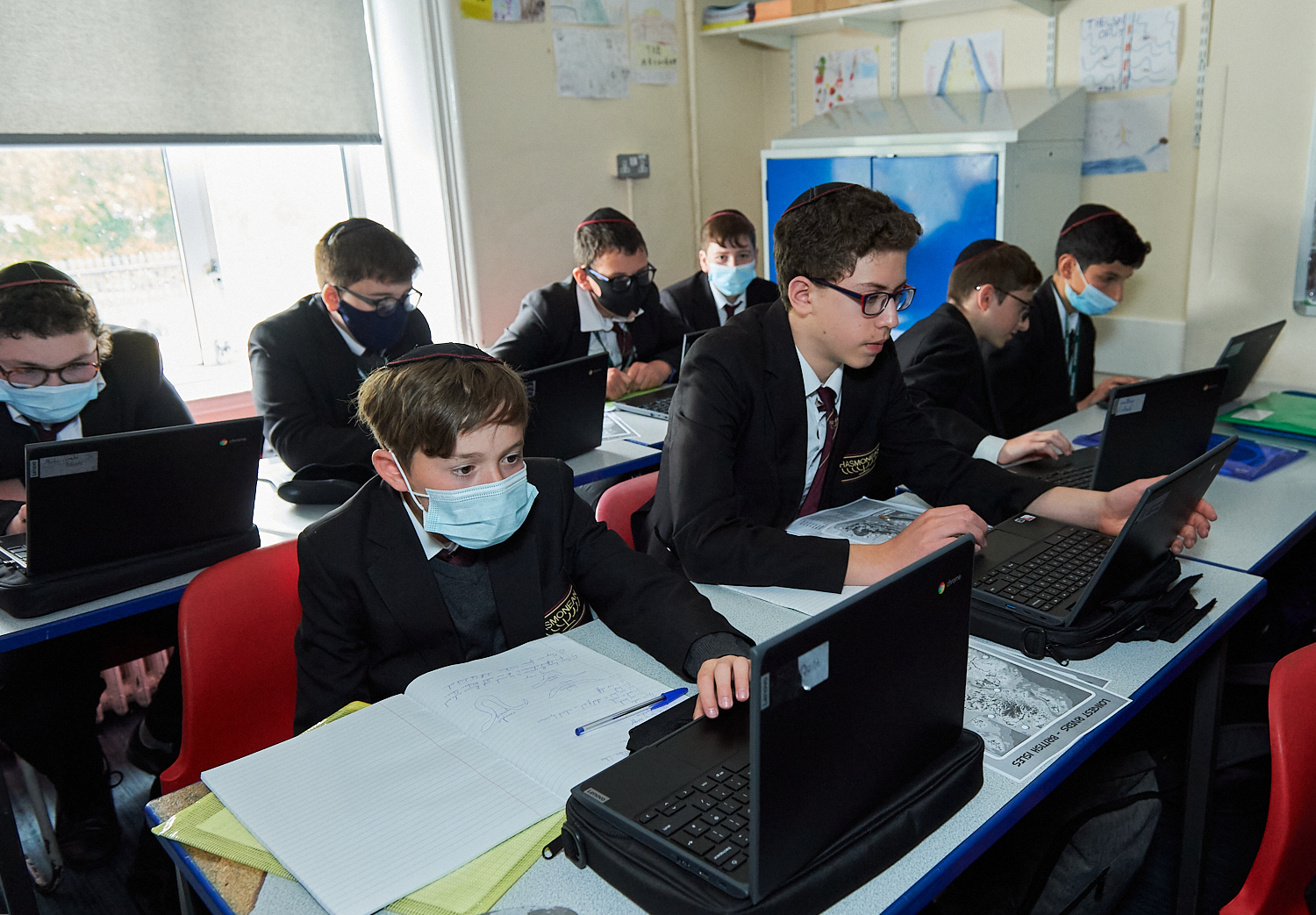
Freedman agrees and, despite his job title, he doesn’t want to teach holograms. “The best place for children is in the classroom and that remains the case,” he says, to the sound of splashing behind him. “The future isn’t remote learning. It’s using some of the tools that remote learning gave us.”
He says the move towards technology in classrooms was “more a case of accelerating things that were beginning to happen anyway”.
Prior to Covid, it was “loosely on the agenda, something for the long-term”, he says. “Suddenly it became an absolute imperative to get the systems up and running. Post-lockdown, these tools will remain in place and will continue to be used.”
But hang on, says Lebrett. The pandemic may yet teach us a different lesson. “I think the biggest change will be that those clamouring for more technology realised it may not be the answer for everything,” she says, quietly confident. “I might be wrong – let’s wait to see.”
Shosh Hill, head of Jewish Studies at the independent Kerem School, says whatever we emerge with, “remote learning has forced all teachers to rethink their teaching styles”, adding: “What works in class doesn’t necessarily translate on Zoom.”
Hill is one of several teachers to sing the praises of ‘blended learning’, which balances face-to-face and remote learning, or “independent-led and teacher-led” study.
“It can mean part of class time watching videos, working off Google documents, digital quizzes,” says Freedman. “Exclusively teacher-led remote learning just didn’t work at all.
You have to be creative in the tools you use and the way you teach. In that sense, Covid has helped improve teaching.”
That’s because teachers have to work harder to overcome the physical distance because the atmosphere in the classroom – pupils responding to each other, to the teacher, whole-class discussions – is harder to generate online, where only one person can talk.
“It’s like everyone else is looking through a keyhole,” says Freedman. “It has to be a lot more interactive. You have to engage the kids in the environment of a classroom, because they’re all sat there in their own environments [at home]. It’s a completely different way of planning.”
Before the pandemic, tech take-up was patchy at best, says Samantha Benson, director of education at PaJeS. “You had individual teachers who were tech savvy, enthusiastic, passionate, but it was more of an added extra. The idea of each child having their own device was a distant dream.”
You have to engage the kids in the environment of a classroom, because they’re all sat there in their own environments [at home]. It’s a completely different way of planning
Cue the first lockdown and “everyone suddenly realised that there wasn’t the expertise, there weren’t enough devices, sometimes there wasn’t even sufficient Wi-Fi or internet connection to support remote learning,” she says. “In the run-up to Pesach, it was a case of ‘make do’. Then schools
got themselves sorted. Teachers and teaching assistants learnt to teach remotely, with different tech tools. Schools decided whether to deliver live sessions or recordings, how they were going to communicate with children
and parents.”
A lot happened in just a few months. “People don’t appreciate how hard everyone was working behind the scenes. Holidays were out. We set up these WhatsApp groups where teachers and headteachers were sharing information and messages. Many were posting late into the night.”
Sharing knowledge became business-critical, says Pearlman. “Prior to Covid, we had a year group trialling blended learning. When Covid hit, suddenly the whole school had to become au fait with it.
“Teachers who’d been learning it deployed across the school to train others. Since they knew we had no option, they picked it up and did amazingly well, so much so that each year group now wants their own set of devices to continue with it.”
Benson says Broughton’s is a familiar experience. “Change was thrust on people, but what it’s given them is something they want to hold on to.” Those new skill sets, and the fact that technology in the classroom is here to stay, is already changing the working life – and recruitment requirements – of teachers.
“It will become imperative,” says Freedman. “We’re already changing our
expectations of staff, that they be comfortable using new technology as it emerges. It’s not something you can choose to use or not use. It’s now part of the job.”
His school has given its Year 7 cohort a Chromebook each and plan to expand it, with devices “part of the things we do in the classroom”. At Hasmonean, Lebrett says the school saw the future in December.
“We saw straight away the benefits to using computers, so the minute we came back every student got a Chromebook. They have them in every lesson. It meant we could move onto our virtual platform straight away. We’re learning where we can use technology for good in the classroom. It’s been a gamechanger.”
We’re already changing our expectations of staff, that they be comfortable using new technology as it emerges. It’s not something you can choose to use or not use. It’s now part of the job
For those worried that children will stop being children with all these algorithms and online interaction, relax. “Children can still mess around on Zoom,” says Benson. “They were changing their name to ‘Connecting…’ and turning their camera off.”
When all’s said and done, when Covid is a distant memory, and when everyone gets to look back on the period, what will be the most abiding memory, emotion, or change to come from it? Hill doesn’t hesitate. “Thank God for the mute button!”

Thank you for helping to make Jewish News the leading source of news and opinion for the UK Jewish community. Today we're asking for your invaluable help to continue putting our community first in everything we do.
For as little as £5 a month you can help sustain the vital work we do in celebrating and standing up for Jewish life in Britain.
Jewish News holds our community together and keeps us connected. Like a synagogue, it’s where people turn to feel part of something bigger. It also proudly shows the rest of Britain the vibrancy and rich culture of modern Jewish life.
You can make a quick and easy one-off or monthly contribution of £5, £10, £20 or any other sum you’re comfortable with.
100% of your donation will help us continue celebrating our community, in all its dynamic diversity...
Engaging
Being a community platform means so much more than producing a newspaper and website. One of our proudest roles is media partnering with our invaluable charities to amplify the outstanding work they do to help us all.
Celebrating
There’s no shortage of oys in the world but Jewish News takes every opportunity to celebrate the joys too, through projects like Night of Heroes, 40 Under 40 and other compelling countdowns that make the community kvell with pride.
Pioneering
In the first collaboration between media outlets from different faiths, Jewish News worked with British Muslim TV and Church Times to produce a list of young activists leading the way on interfaith understanding.
Campaigning
Royal Mail issued a stamp honouring Holocaust hero Sir Nicholas Winton after a Jewish News campaign attracted more than 100,000 backers. Jewish Newsalso produces special editions of the paper highlighting pressing issues including mental health and Holocaust remembrance.
Easy access
In an age when news is readily accessible, Jewish News provides high-quality content free online and offline, removing any financial barriers to connecting people.
Voice of our community to wider society
The Jewish News team regularly appears on TV, radio and on the pages of the national press to comment on stories about the Jewish community. Easy access to the paper on the streets of London also means Jewish News provides an invaluable window into the community for the country at large.
We hope you agree all this is worth preserving.
-
By Laurent Vaughan - Senior Associate (Bishop & Sewell Solicitors)
-
By Laurent Vaughan - Senior Associate (Bishop & Sewell Solicitors)
-
By Laurent Vaughan - Senior Associate (Bishop & Sewell Solicitors)
-
By Laurent Vaughan - Senior Associate (Bishop & Sewell Solicitors)

